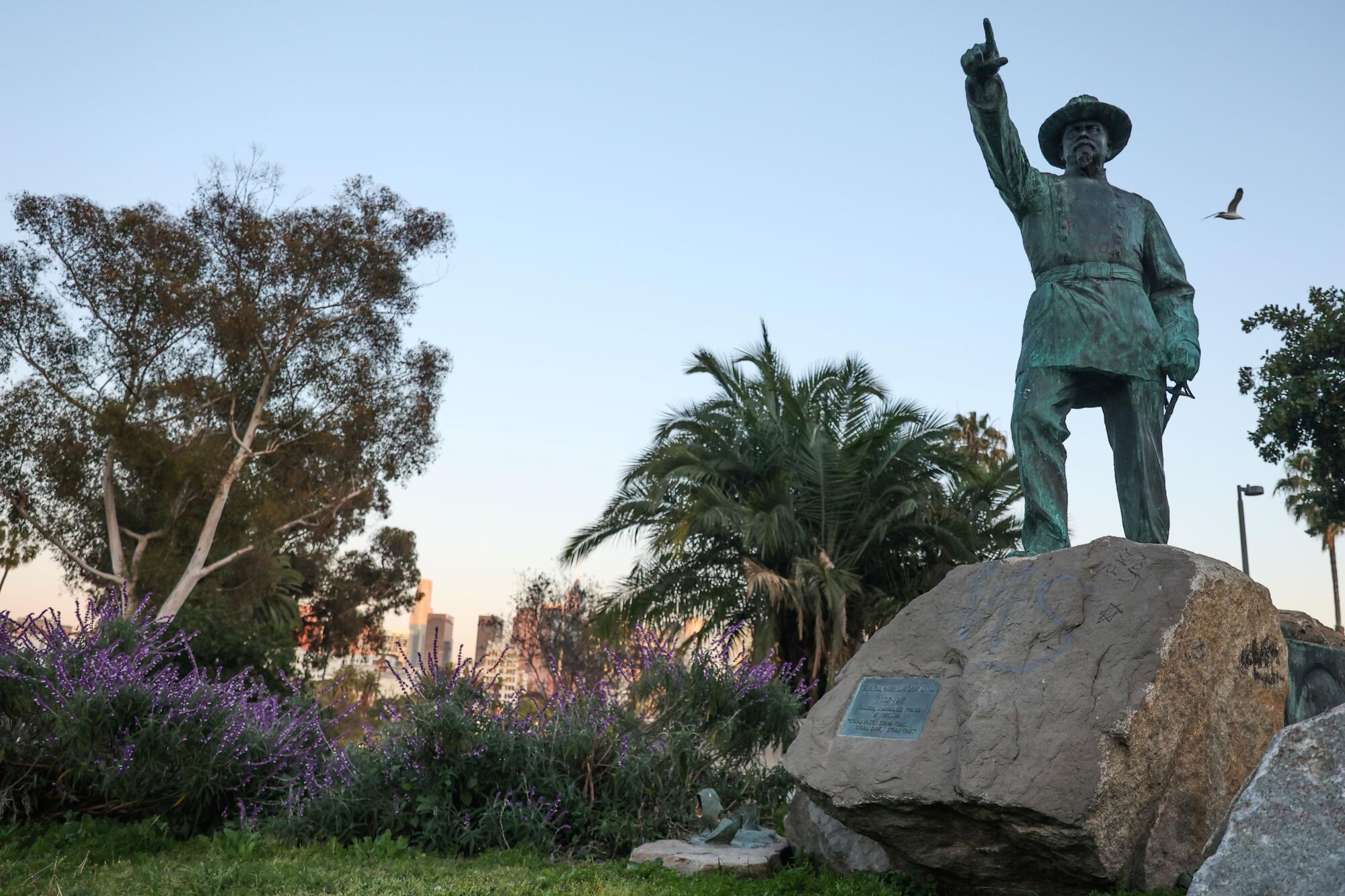
- Share via
Standing stoutly on a granite rock just off Wilshire Boulevard in MacArthur Park, Harrison Gray Otis has lost his retinue.
A colossus of the rough-and-tumble politics of Los Angeles at the turn of the last century, a former military officer, antilabor crusader and owner of a newspaper that would become the Los Angeles Times, he is alone, a solitary statue in the midst of the city.
A soldier, who stood to his left, vanished years ago, and last month, the newsboy who held aloft the latest edition disappeared, stolen by thieves who left behind only two bronze shoes, one intact and the other mangled.
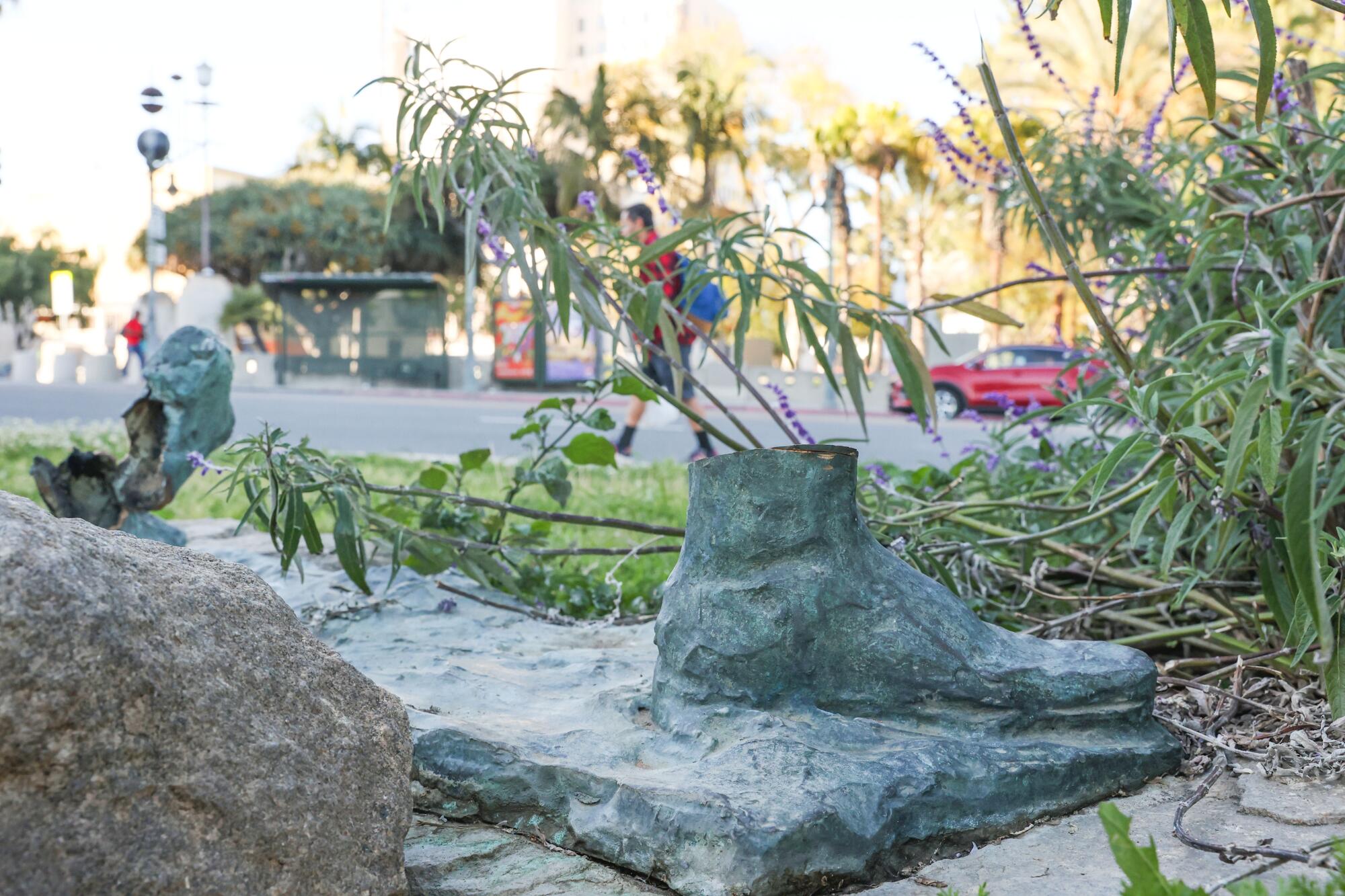
The theft — and its most coveted metal, bronze — belongs to a series of graceless robberies across the Southland and the country that have rendered streets dark, cemeteries without markers and public art destroyed.
“I’ve been with the Department of Cultural Affairs for 27 years, and I’ve never seen this level of attack on public art and sculpture,” said Felicia Filer, director of department’s public art division.
Filer described an increase in the theft of bronze sculptures and plaques starting about five months ago. And Los Angeles is not alone in these insults to history and dignity.
In January, a statue of the trailblazing Black baseball star Jackie Robinson in Wichita, Kan., was similarly hacked at the ankles, carted away and destroyed. Donors are raising money for its replacement.
The loss of the newsboy was especially “horrible” for Anne-Lise Desmas, who discovered and reported the theft last Saturday.
“It is a super important monument,” said Desmas, art historian and senior curator of sculpture and decorative arts at the Getty Museum, “not just because of Gen. Otis’ role in the history of Los Angeles but also for the sculptor.”
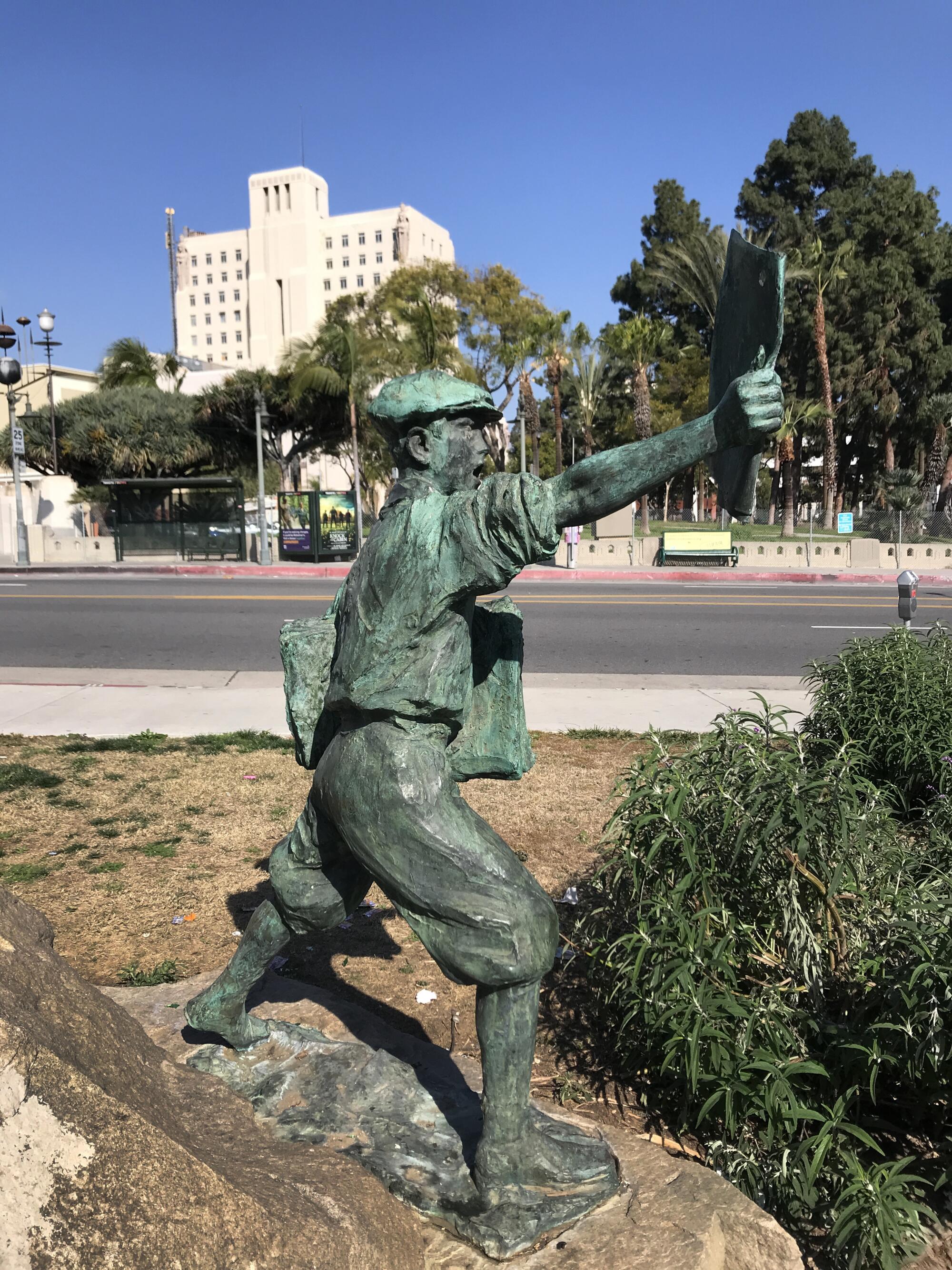
The statue, she explained, is the work of Paul Troubetzkoy, who came to Los Angeles in 1917 and was regaled for his skill bringing life to bronze, an equal to Auguste Rodin and a friend of Leo Tolstoy. Born in Italy and a habitué of high society, Troubetzkoy was popularly known as Prince Troubetzkoy, a title gained from his father, who was a Russian prince.
Desmas, who is co-curating an exhibition of Troubetzkoy’s work at the Musee d’Orsay in Paris next year, was on her way to the premiere of “La Traviata” at the Music Center last Saturday when she made a detour to MacArthur Park.
She was in the company of a friend, a visiting curator from the Louvre, whom she thought would be interested in seeing the monument.
Stepping out of the car, she was “completely shocked” by the defilement. She had last visited the statues a year ago when the newsboy still stood. She took pictures and forwarded them to the Department of Cultural Affairs and to The Times.
A special task force with the Los Angeles Police Department, organized to “make arrests and deter activity” related to heavy metal thefts, is investigating, said LAPD Deputy Chief Michael Oreb.
Surveillance cameras captured two trucks and individuals in reflective vests in the vicinity of the monument on March 25 at 1:30 a.m., according to Oreb.
“We believe they were posing as city workers as they used a saw to cut down the newsboy,” Oreb said.
The bronze of the statue is composed mostly of copper, which is especially valuable when melted down, recast and sold to metal recyclers.
Theft of copper — in particular, copper wire — has become so widespread, costing the city more than $17 million, that the City Council in February approved a motion to establish a reward program for information about the wire thefts.
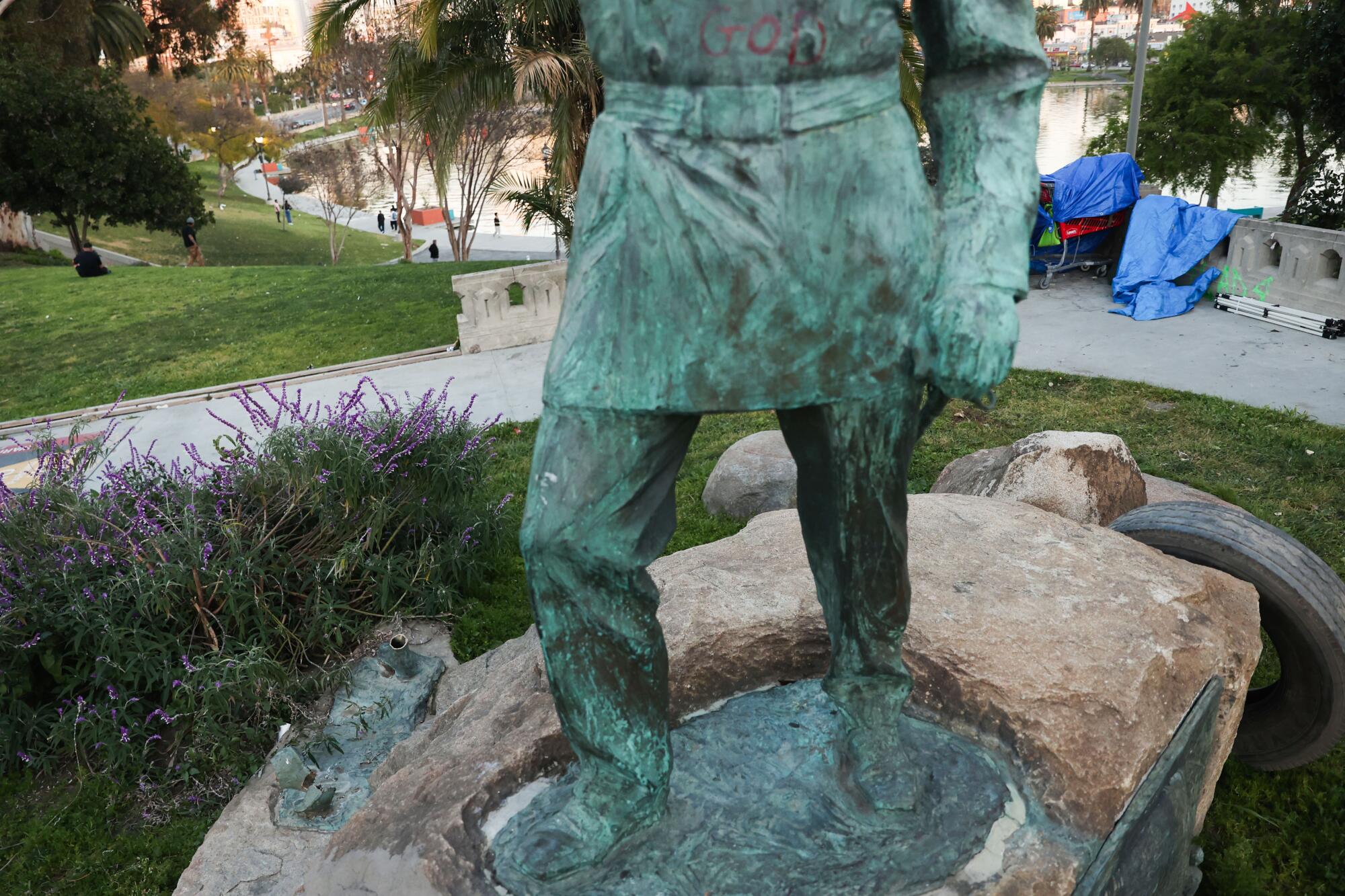
“The city, quite literally, is being stripped for parts,” the motion read.
The Department of Cultural Affairs is working with artists and fabricators to try to reinforce existing installations, said Filer, and encouraging artists to use stone instead of bronze or other metals — “just until this period of activity dies down.”
“We’re still commissioning public art,” she said. “It is important to have artistic and cultural expression in our built environment, for Angelenos to see themselves reflected in public spaces. Our role is to ensure that public art can exist in all neighborhoods and communities, telling all of our stories.”
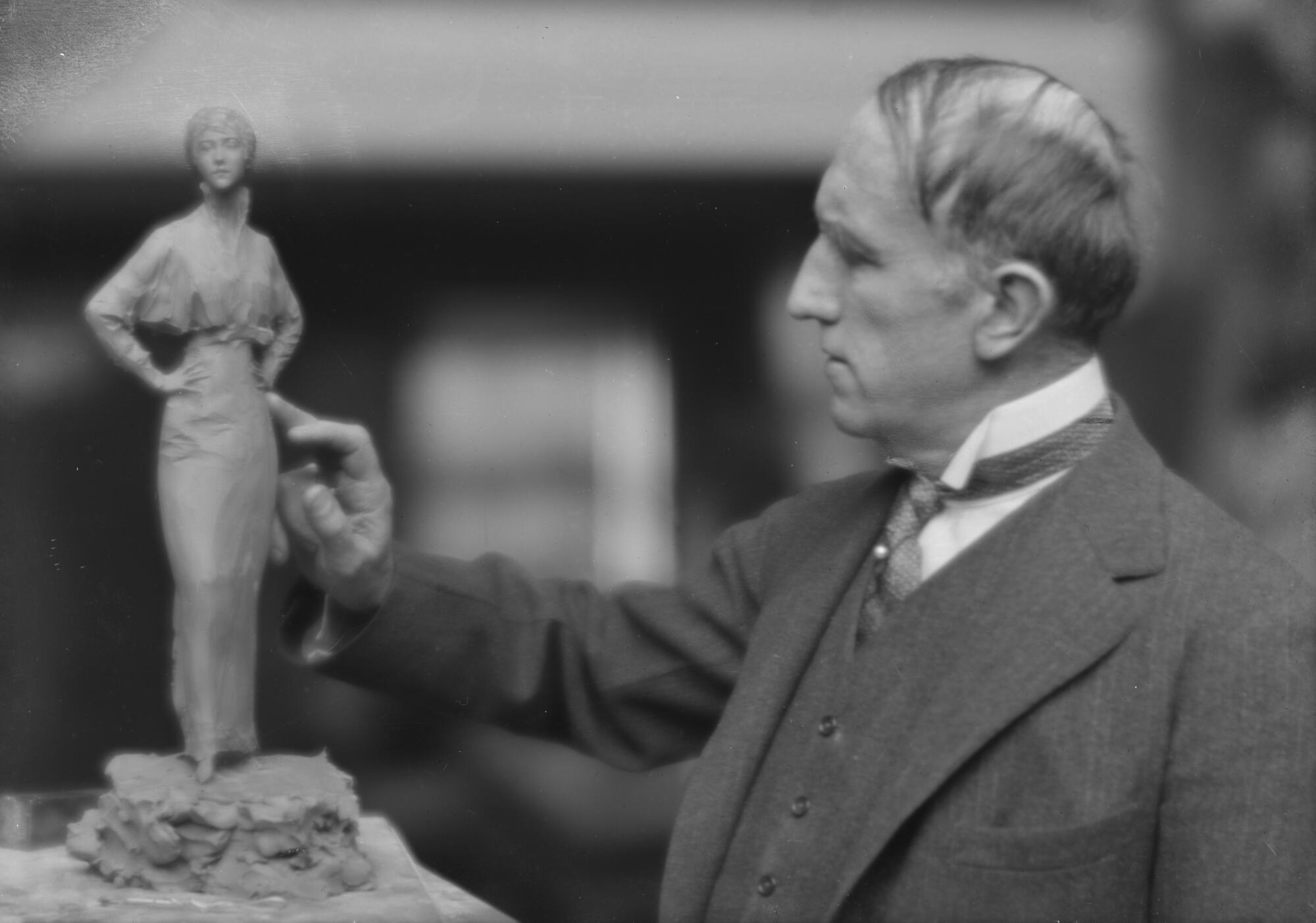
Even though Troubetzkoy’s commission was private, the work had the city’s approval. Otis’ reputation was mixed. He squashed labor unions, boosted big business and fought progressives but was admired among Los Angeles’ moneyed elite, who called him by his military title, Gen. Otis.
With $50,000 raised among donors, the Harrison Gray Otis Memorial Assn. hired Troubetzkoy, who conceived of the deceased man’s life as a heroic drama. His sketches won a design competition in 1918.
While living in Los Angeles, Troubetzkoy had sculpted statuettes of Hollywood stars such as Mary Pickford, Douglas Fairbanks and Charlie Chaplin. But none — with the possible exception of an equestrian statue of Czar Alexander III in St. Petersburg — matched this scale and scope.
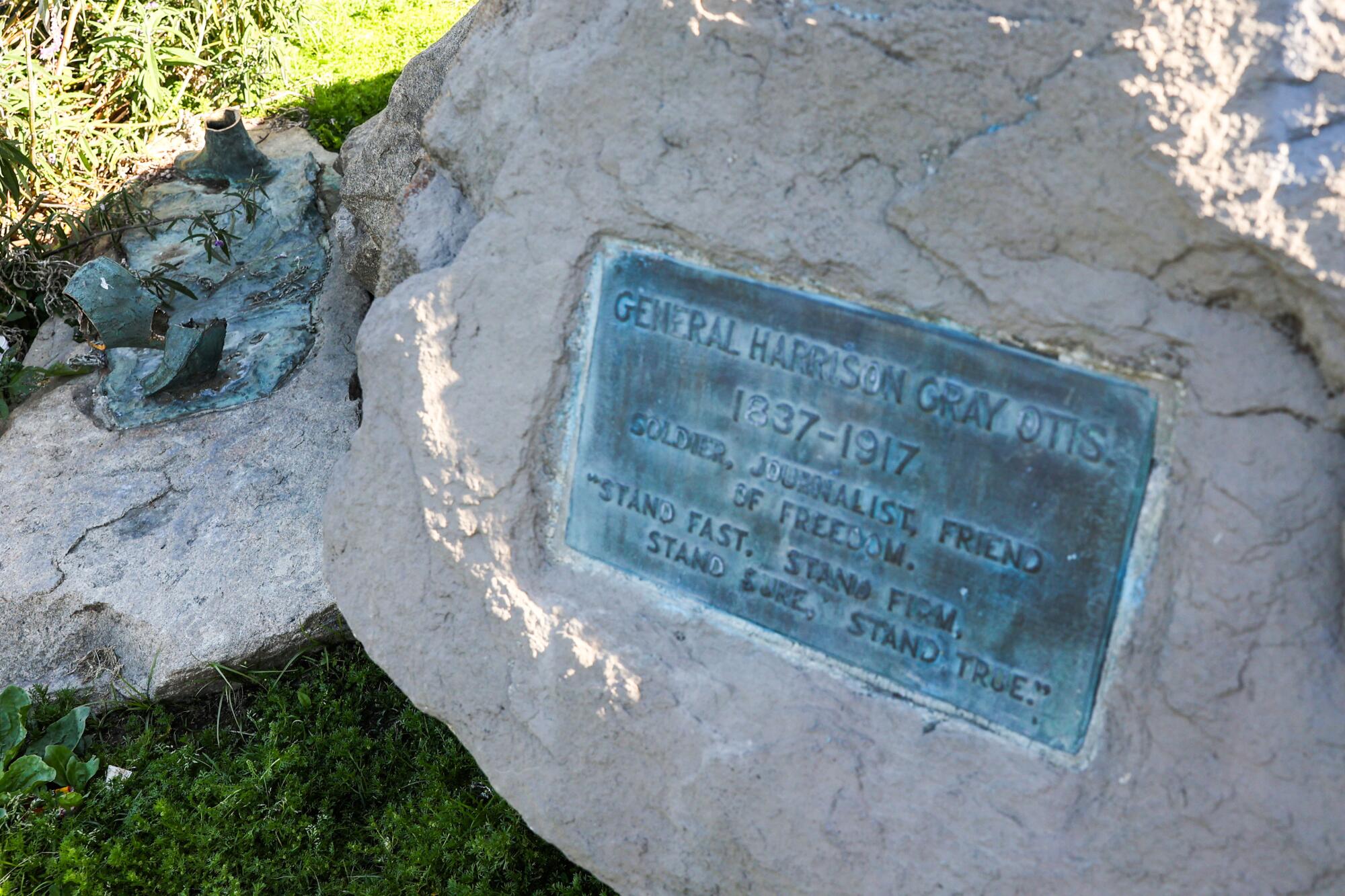
The work was unveiled in 1920 in a ceremony that lauded Otis for typifying “the ideal which first brought men and women to America.”
The monument was located across the street from the general’s former home, which he had donated to the city to become the Otis Art Institute. The park — once known as Westlake Park — was on the city’s western edge, and Wilshire Boulevard was its Champs-Élysées, perfect for Sunday afternoon promenades.
Less heralded at the time were the models that Troubetzkoy used for the soldier and the newsboy. Their names remained unknown until 1979, when a reader wrote to The Times identifying the newsboy as Andrew Azzoni, whose father was a waiter at a nightspot frequented by Troubetzkoy.
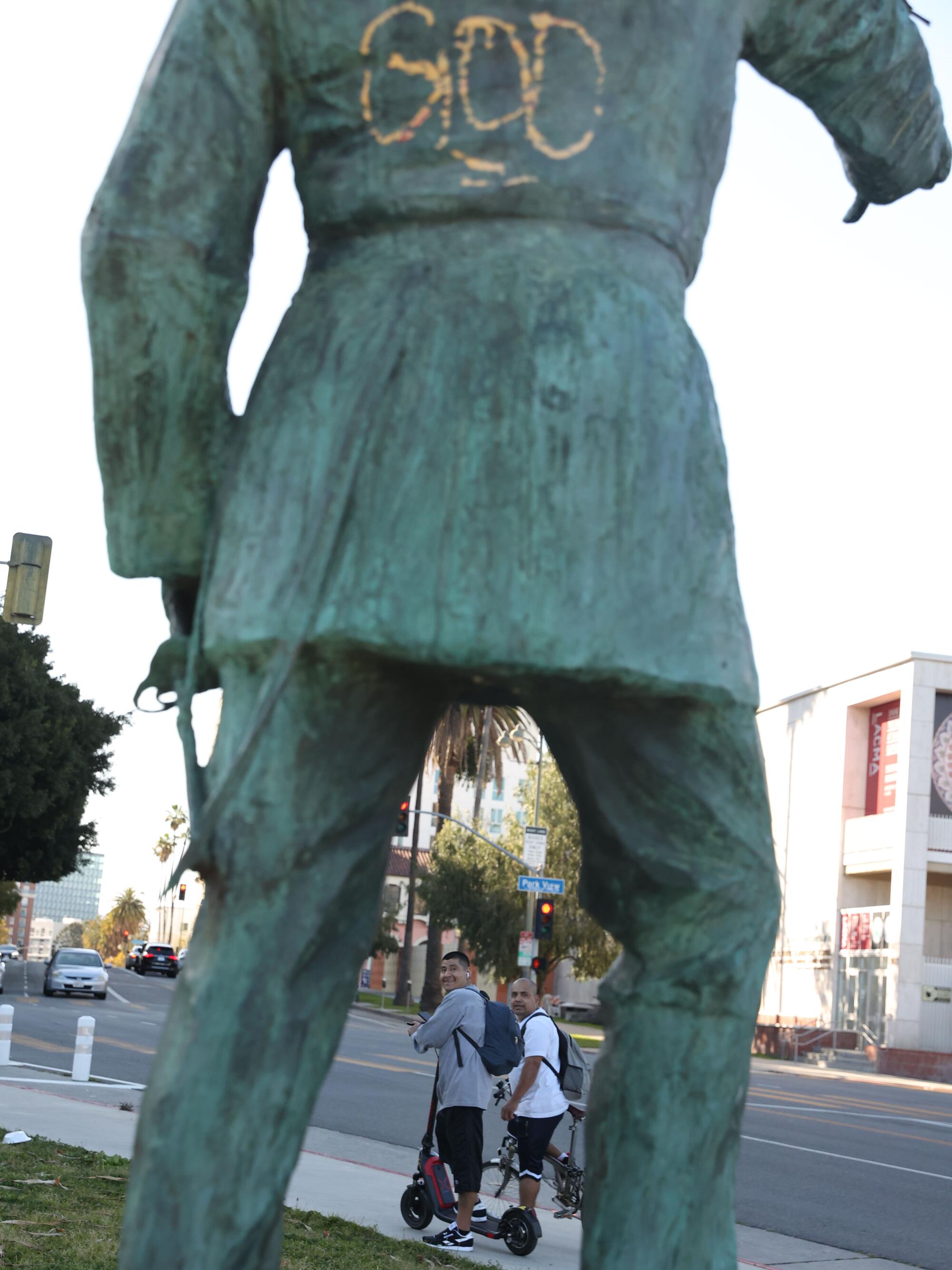
In an interview, Azzoni recalled being paid $25 to mimic the pose he had used when he was 11 and sold the Record, the Express and the Examiner on street corners.
“It’s me, that statue,” Azzoni told The Times. “I think of it that way. When I die, I’ll still be there.”
He sold The Times, he told the reporter, just on Sundays, and could only remember the last name of the soldier, Compatelli, who had served as an assistant to the Italian-born artist.
Over the years, time has not been kind to the monument.
Not long after Troubetzkoy’s death in 1938, a car failed to negotiate a curve and crashed into the soldier. Repaired, he was soon returned to his post, only to disappear again, rumored to have been in the basement across the street in the Otis Art Institute, where he was eventually melted down.
As the city changed, so did the park. In 2007, it was the scene of a notorious May Day melee between police and activists calling for amnesty for undocumented immigrants. The 18th Street Gang claimed the territory, exacting “rent” from vendors and drug dealers, and while gentrification has uplifted the neighborhood, its lawns and trees still provide refuge for the unhoused, whose tents are often pitched in the shadow of Otis’ outstretched arm.
Recently, someone streaked black paint on Otis’ face and wrote “GOD” above his belt and on his back.
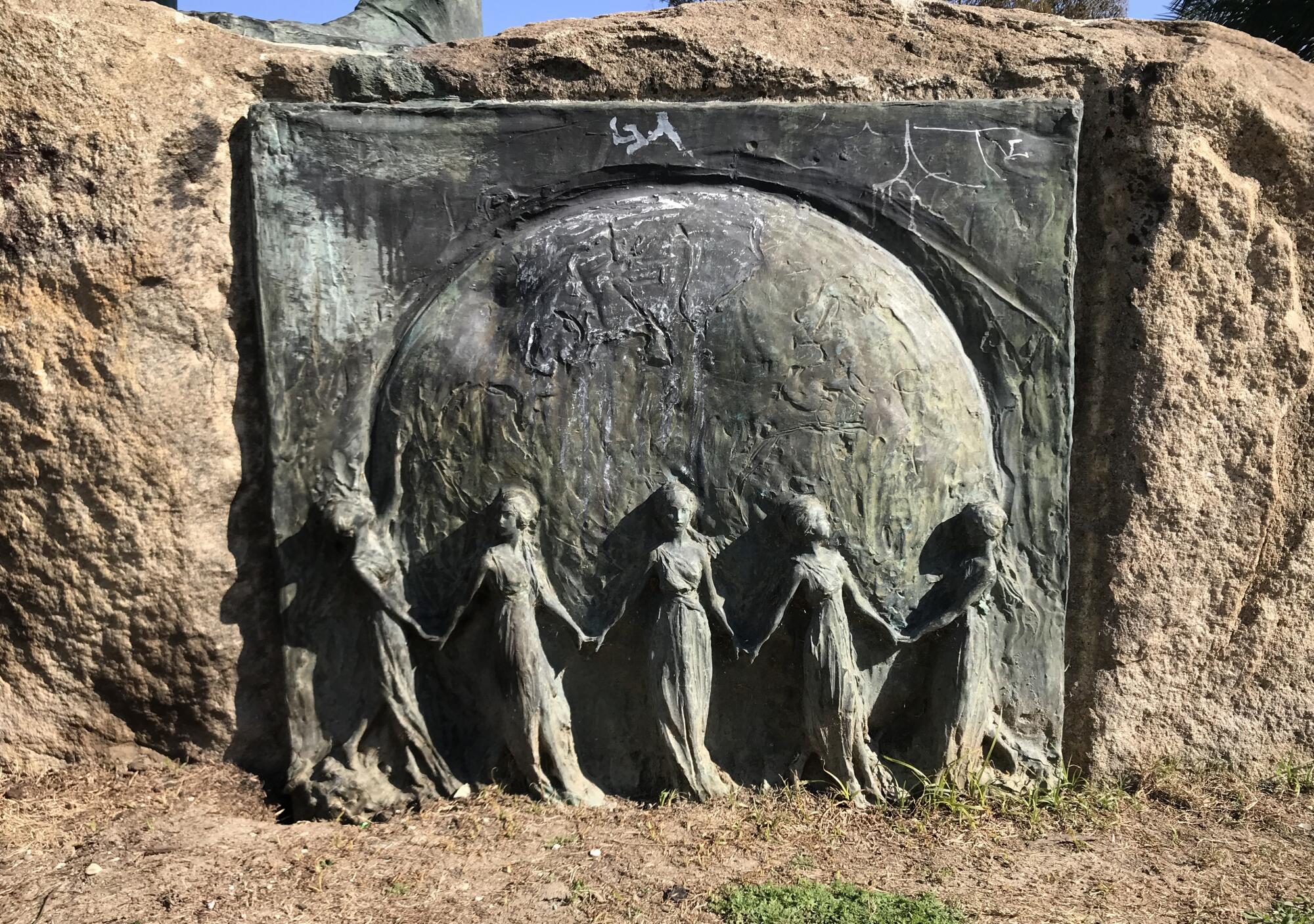
Desmas hopes the city will take steps toward protecting what remains of the monument: the statue of Otis, a small frieze of five gowned women holding hands before the outline of the world that honors Otis’ role championing international peace, and a commemorative plaque inscribed with The Times’ motto back then:
“Stand fast, stand firm, stand sure, stand true.”
Desmas worries that the thieves will return and Otis will stand no more.
More to Read
Sign up for Essential California
The most important California stories and recommendations in your inbox every morning.
You may occasionally receive promotional content from the Los Angeles Times.











